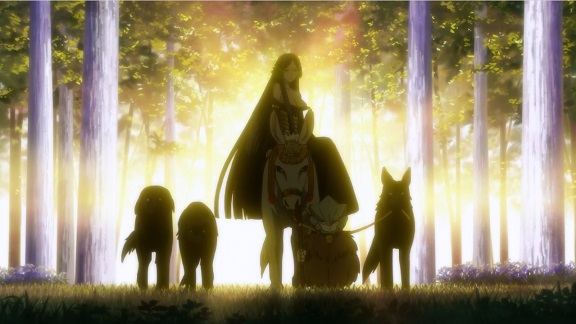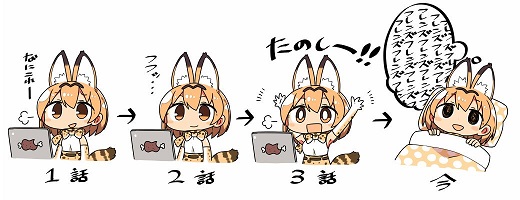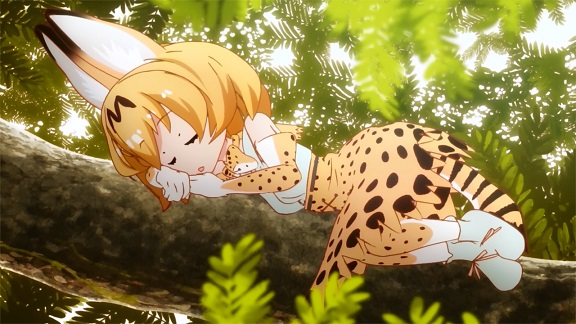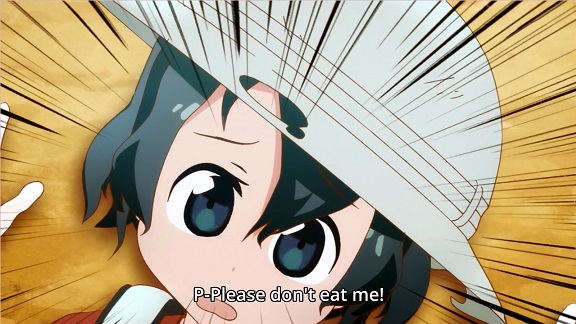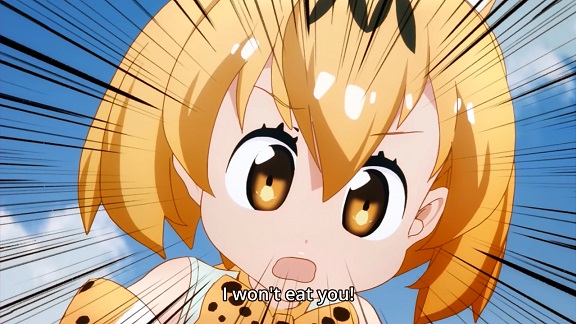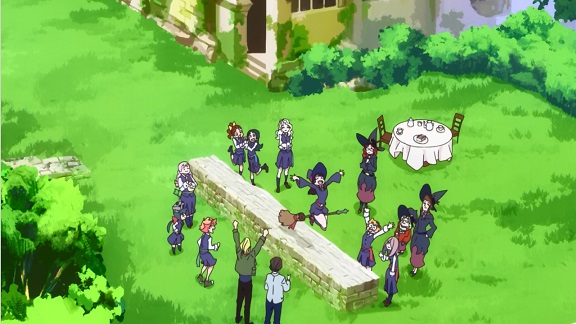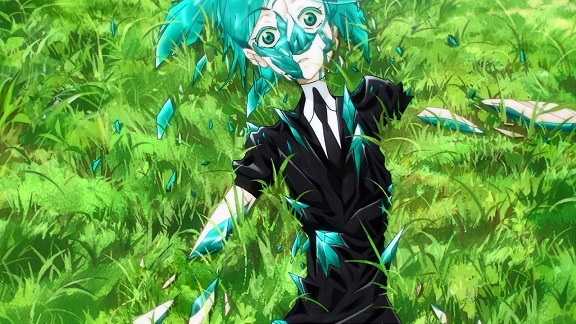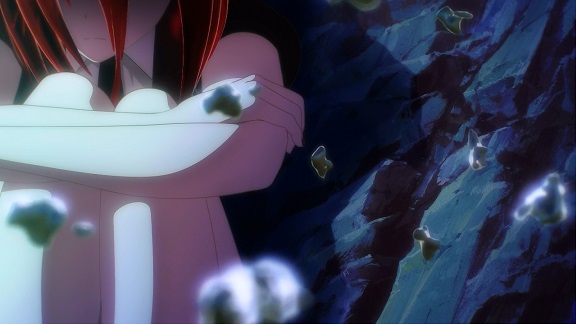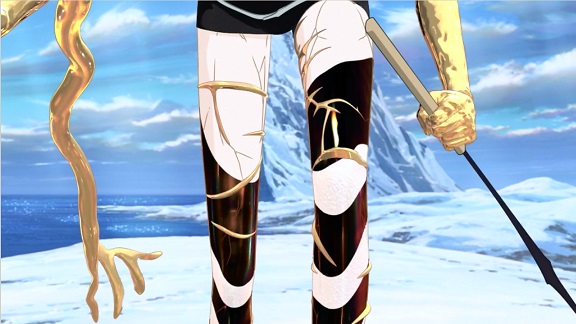Two guys stalk an ex-coworker in order to get a date from her.
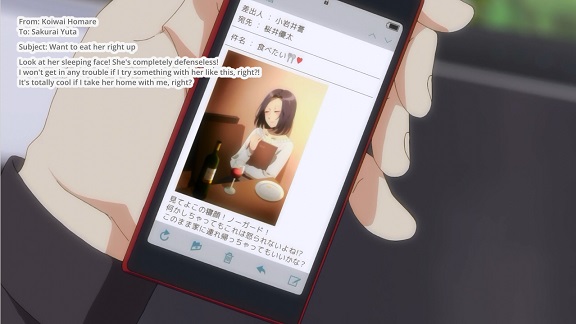
Really, wasn’t this supposed to be a relatable cringe comedy about a woman in her thirties quitting her job to become a NEET and play MMOs, perhaps with a bit of online gender swapped romance? How did it get to this?

In hindsight things had begone to go wrong since the second episode. In the first episode our protagonist Morioka Moriko, had started in a new MMO role playing as Hayashi, a male knight. She met up and quickly became best friends with Sakurai Yuta, a guy role playing as Lily, a female healer, though neither know of the other’s gender switch. In the second, after Hayashi and Lily had spent the whole night playing together, Morioka literally runs into Sakurai going to the convenience store. She passes out and wakes up with him having taken her to the hospital. When she texts him later to thank him for his help, he asks her out. Which seems a bit iffy: how often do you hit on women you’ve accidentally knocked unconscious?
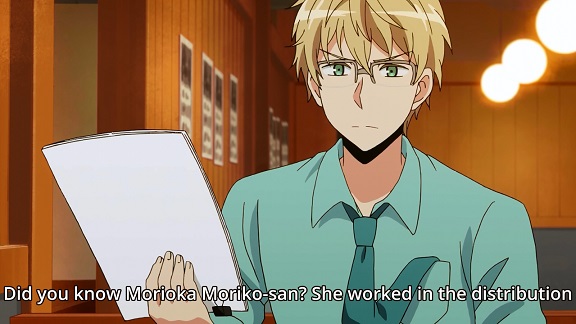
That could’ve been forgiven, but the third episode opens with Sakurai asking his co-worker about Morioka, as they had worked at the same company, having already stalk^w researched her enough to find this out and find the training manual she had written. Dodgy enough, but then the co-worker tells about the time he caught her crying on the phone, which, yeah. Remember that at this point Sakurai doesn’t know anything about Morioka, or that she’s Hayashi; she’s literally just a woman who he ran into in the streets, nothing more. Even his co-worker Koiwai calls him a stalker at this point, though as the next episode proves, he’s just as bad.
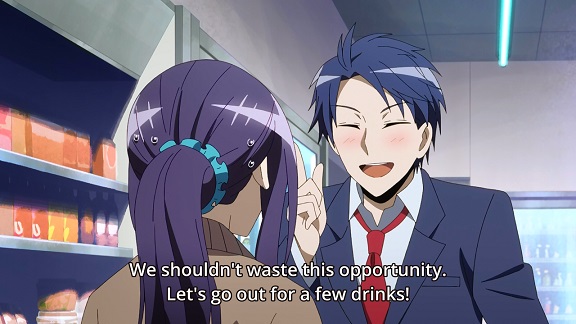
Or perhaps even worse, as he coincidently runs into Morioka at the supermarket, recognises her and talks her into a date. Koiwai is the most problematic character in the series: aggressive, manipulative and not above gaslighting Morioka if it gets results. That he does it for a noble cause, to get Morioka and Sakurai together is no excuse. The scene in this episode where he basically pressures Morioka in going for drinks together was painful to watch and not in a good cringe worthy way. It just came across as low level harassment rather than something romantic. He uses his past acquaintance with her and her admission that she’s jobless and a NEET to browbeat her into accepting, where she herself feels she has no right to refuse.
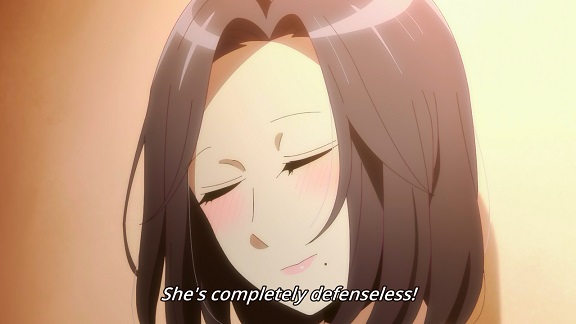
Episode five and six is where it all came to a head for me. In episode five Morioka prepares for her date with Koiwai, asking advice from Lily online, as Hayashi, with neither of them yet knowing who they are in real life. However, because of what Hayashi tells Lily about his date, the latter does begin to suspect he is Morioka. When she goes on her date and Kowai doesn’t show up, she thinks she has mistook the day it was supposed to take place. However, it’s strongly hinted that Koiwai had actually set her up. I got the impression his plan all along had been to skip out on his date, to give Sakurai a chance to “coincidently” run into her and go out with her instead. An impression reinforced by how much he talked Sakurai up when Koiwai went on his date with her the next day. Which lead to the sending of the text message and photo as shown at the top of the post. It was at this point I stopped watching the series, as the combination of Koiwai gaslighting Morioka and the rapey text he sent was just too much.
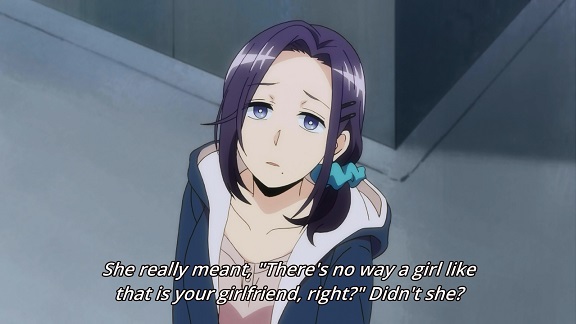
One other thing that bothered me about episode 4-5 needs mentioning too. The clerk at the supermarket Morioka shops at had noticed that she was always buying internet money for use in the MMO she played as Hayashi. He talks to her about it, learns who she is then reveals he’s actually her guild master. Which in itself is not a problem, but he then uses this to hassle her a bit about her on and offline life. All with the best of intentions, but still. This is a recurring theme in the middle episodes of the series: he, Koiwai, Sakurai all know more about Morioka than she does about them. Sakurai knows or suspected that she was Hayashi since episode five, but only tells the truth about himself at the end of episode eight. This information disparity means Morioka is continuously in the dark about their true motives. It doesn’t help that she’s already suffering from a low self esteem and has a lack of confidence in herself. You could imagine a Morioka in real life might’ve been devastated to find out that her online confidante was actually the man who was romantically pursuing her. There’s a trust issue here that’s never really resolved.
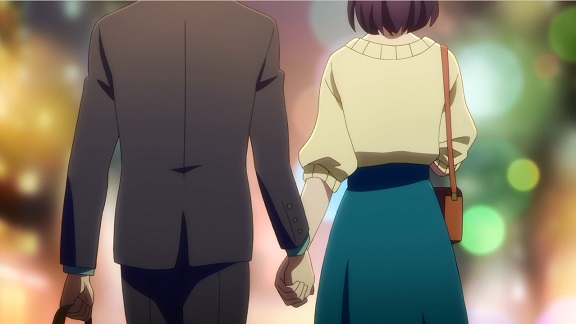
The series improves a lot from episode seven onwards. Sakurai struggles to match his attraction to Morioka with his knowledge that she is Hayashi, then learning in episode seven that she was also his best friend in a previous MMO. When he finally confesses the truth about him being Lily to Morioka in episode eight, things can finally move ahead and the last two episodes is where they finally and slowly start to develop their relationship, with some last minute meddling by Koiwai. This part was actually quite sweet but came a bit late for me after the unpleasantness of the middle episodes. I get the strong feeling that the writers just didn’t know how to get Morioka and Sakurai from being online friends without knowing the other in real life into a proper relationship, other than to use a hefty dollop of romcom coincidences and third party manipulation by Koiwai, who conveniently knew them both. It’s a pity, because there’s so much you could do with an online relationship moving beyond friendship into mutual attraction and something more, the slow discovery of the “real” person behind the MMO character. Both Morioka and Sakurai are perfectly sweet, innocent cinnamon buns, so it’s vexing that the series had to manipulate them this way to get them together.
This is the ninth post in this year’s twelve days of anime challenge. Tomorrow: disappointing sequels.



